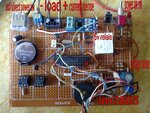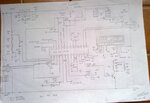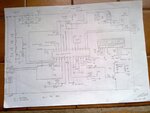erchiu
Member level 5
- Joined
- Apr 7, 2012
- Messages
- 93
- Helped
- 2
- Reputation
- 4
- Reaction score
- 1
- Trophy points
- 1,288
- Location
- Rome - Italy
- Activity points
- 2,082
hi everybody
i am making an circuit for check the capacity of lead batteries and i used an pic18f2550.
for to check the capacity of the battery i connect to it an load and measured the current and voltage.
for make this i use an 5v relais.
but here i have a problem.
i maked the circuit in way that it can work in two different way.
first way :with external 5v power supply way usb
second way: directally from the battery by to check.
when i use the circuit in first mode (with an external 5v power supply), it work is good.
when i use the circuit in second mode (directally from the battery to check, the pic is reset when the load to discharge the battery is connected.
as can i solve this problem?
erchiu
i am making an circuit for check the capacity of lead batteries and i used an pic18f2550.
for to check the capacity of the battery i connect to it an load and measured the current and voltage.
for make this i use an 5v relais.
but here i have a problem.
i maked the circuit in way that it can work in two different way.
first way :with external 5v power supply way usb
second way: directally from the battery by to check.
when i use the circuit in first mode (with an external 5v power supply), it work is good.
when i use the circuit in second mode (directally from the battery to check, the pic is reset when the load to discharge the battery is connected.
as can i solve this problem?
erchiu



